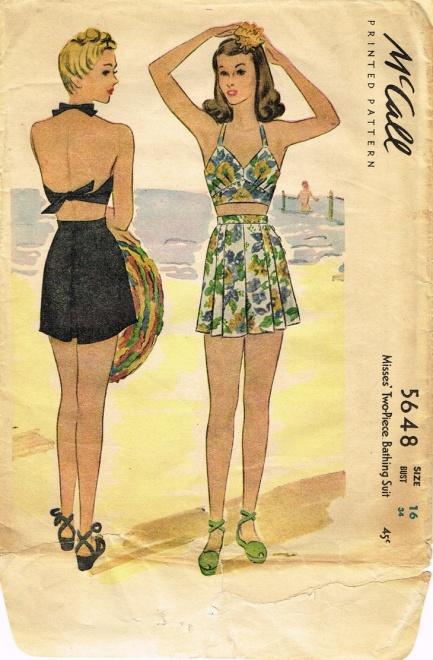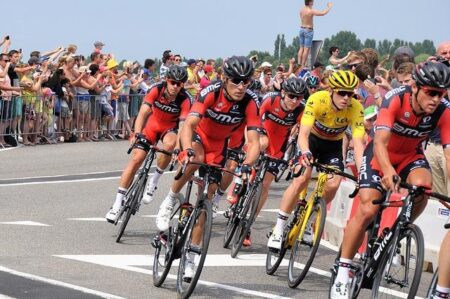How America Won the Fashion War (or, at Least, the Sweatpants Battle)
In a cultural landscape continually reshaped by shifting social norms and global events, the pandemic catalyzed an unprecedented transformation in American fashion, elevating comfort over convention. As lockdowns confined many to their homes, sweatpants evolved from casual attire to symbols of resilience and adaptability. In this examination, we delve into the factors that solidified America’s triumph in the fashion war, spotlighting how a once-maligned garment transcended its humble origins to become a staple of contemporary wardrobes. With style influencers and high-end designers embracing the relaxed aesthetic, the transition signals not just a change in what we wear, but a broader commentary on lifestyle and identity in a post-pandemic world. This article explores the social, economic, and cultural implications of this trend, illustrating how America is redefining fashion, one comfortable garment at a time.
The Rise of Comfort Culture and its Impact on American Fashion
The pandemic served as a catalyst for the rapid expansion of comfort culture in America, leading to a seismic shift in fashion preferences. As remote work and social distancing became the norm, consumers gravitated toward casual and functional attire. Traditional professional clothing took a back seat as sweatpants, loungewear, and athleisure surged in popularity. This transition wasn’t just about practical comfort; it reflected a broader, evolving attitude toward dressing that values well-being and self-expression over rigid societal expectations. Retailers who once thrived on more formal styles quickly adapted, flooding the market with ensembles that offered the ease of comfort without sacrificing style, often dubbed “elevated loungewear.”
Social media further fueled this transformation, as influencers and celebrities embraced casual attire, making it not only acceptable but aspirational. The rise of platforms like Instagram and TikTok allowed everyday consumers to showcase their style choices that prioritized comfort while still looking fashionable. The lines between homewear and streetwear blurred, making way for a new era where comfort reigns supreme. Even luxury brands took notice, incorporating softer fabrics and relaxed silhouettes into their collections, effectively creating a fashion landscape where comfort is king. The implications are profound, signaling a long-term shift in retail strategies, consumer behavior, and, ultimately, the definition of style itself.
Market Adaptation: How Brands Pivoted to Meet Demand
In a rapidly evolving consumer landscape, brands have demonstrated remarkable agility in adapting to shifting demands. The onset of the pandemic shifted priorities, turning comfort into a pivotal factor in fashion. Major retailers like Gap and H&M pivoted their supply chains to focus on athleisure and loungewear, capitalizing on the demand for sweatpants that became a staple of remote work attire. This strategic move not only catered to changing consumer preferences but also breathed new life into their brand images.
Furthermore, smaller brands seized the opportunity to carve out niche markets. Companies such as Everlane and Outdoor Voices emphasized sustainability and comfort, appealing to environmentally-conscious consumers seeking versatile and practical clothing. Their success can be attributed to effective social media campaigns that showcased real-life scenarios of consumers donning their products in cozy home settings. Below is a summary of how key players embraced this trend:
| Brand | Strategy | Outcome |
|---|---|---|
| Gap | Shifted focus to loungewear | Increased sales by 40% |
| H&M | Enhanced athleisure lines | Expanded customer base |
| Everlane | Promoted sustainable practices | Strong social media engagement |
| Outdoor Voices | Capitalized on community-building | Became a household name |
The Role of Social Media in Shaping Trends and Consumer Choices
In an era where digital interactions increasingly dictate consumer behavior, social media has emerged as a pivotal platform for shaping fashion trends. The rapid dissemination of information through channels like Instagram, TikTok, and Pinterest enables brands to reach audiences with unparalleled speed. Followers often become trendsetters overnight, propelled by viral challenges or influencer partnerships that captivate user interest. This dynamic shift has led to the rise of casual wear—particularly sweatpants—as the garment of choice during recent years, showcasing the powerful influence of social media on personal style and consumer preferences.
Moreover, the immediacy of social media has fostered an environment where feedback loops are swift and tangible. Brands now rely on data-driven insights from user interactions to refine their collections and marketing strategies. This responsiveness is evident in the way companies curate their social feeds, often highlighting customer-generated content to validate their coolness and trendiness. Some key trends highlighted in the emerging landscape include:
- Authenticity over Perfection: Users gravitate towards relatable content that feels genuine.
- Inclusivity in Fashion: Diverse representations are not just encouraged but expected.
- Eco-consciousness: Sustainability is becoming a significant factor influencing brand loyalty.
As brands navigate this new terrain, they not only compete against one another but also against the very whims of online users, who have more power than ever to dictate what’s “in” and what’s “out.” The interplay between creator content and consumer response will continue to evolve, making it essential for businesses to remain adaptable and attuned to the digital pulse of the marketplace.
Future Forecast: What the Sweats Trend Means for Fashion’s Evolution
The meteoric rise of sweatpants in everyday attire signifies more than just a shift in comfort; it reflects an evolving cultural landscape within fashion. As remote work and casual gatherings become the norm, the styling authority has shifted dramatically. Sweats, once limited to gym wear, now occupy a prominent place in luxury and high-street fashion, merging comfort with chic. The trend highlights several key factors influencing this evolution:
- Comfort Over Convention: Consumers now prioritize ease and functionality, changing fashion’s traditional hierarchy.
- Fashion Inclusivity: Sweats are versatile, appealing to various body types and lifestyles, promoting a more inclusive approach to style.
- Blended Aesthetics: Innovative designs are integrating sweats with sophisticated elements, signaling a harmonious balance between comfort and elegance.
This evolution can also be quantified by examining recent data on consumer preferences. A survey conducted by Fashion Insights found that 75% of respondents now favor casual wear for daily outfits, starkly indicating a departure from rigid dress codes. The data underscores a broader societal inclination toward relaxation mirrored in fashion choices:
| Year | Casual Wear Preference (%) |
|---|---|
| 2020 | 45% |
| 2021 | 60% |
| 2022 | 65% |
| 2023 | 75% |
As sweatpants continue to infiltrate the wardrobes of fashion-savvy consumers, we can anticipate an even deeper integration of comfort into the fabric of style. The intersection of practicality and aesthetics increasingly shapes not just individual wardrobes but entire fashion landscapes moving forward.
Wrapping Up
As we navigate the ever-evolving landscape of fashion, it’s evident that America’s embrace of casual wear—especially sweatpants—marks a significant cultural shift. While high fashion often captures the spotlight, the real victory lies in the comfort and practicality that sweatpants have come to symbolize in our daily lives. From boardrooms to living rooms, this unassuming garment has carved out a powerful niche, redefining our understanding of style in the post-pandemic era.
With major retailers expanding their athleisure lines and consumers prioritizing comfort over formality, the sweatpants phenomenon reflects broader societal changes influenced by health, technology, and a growing emphasis on mental well-being. As we move forward, it will be fascinating to see how this trend continues to shape not just fashion, but our lifestyles and societal norms as a whole.
In the wake of this “fashion war,” one thing is clear: the battle for our wardrobes may have been won, but the conversation—about identity, comfort, and expression—has only just begun.




